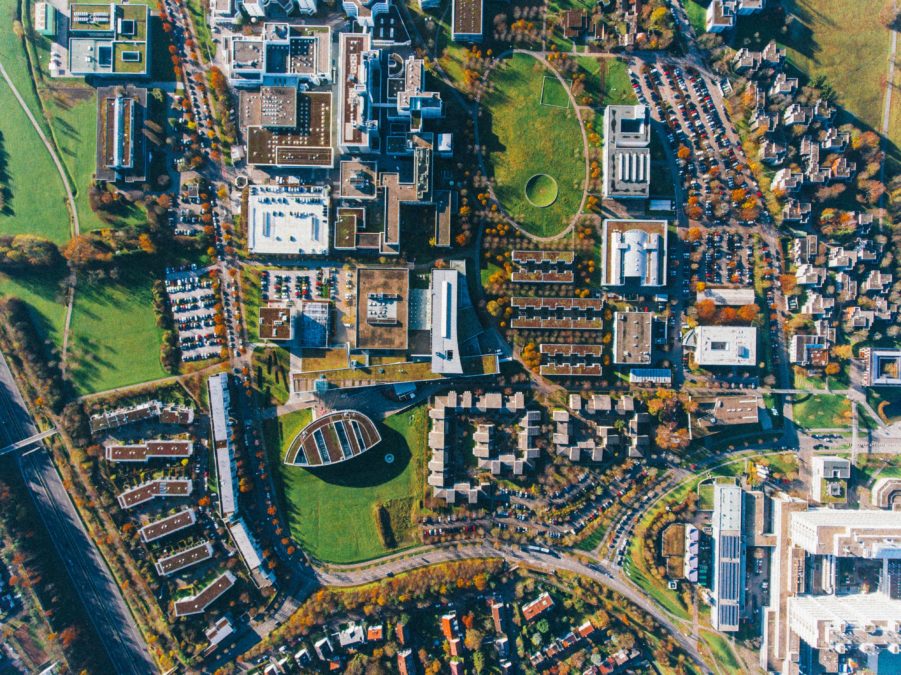Guide for Investors: How to Finance Green Buildings
Investors around the world are jumping on the climate finance bandwagon and trying to figure out how to channel funds in climate-friendly or “green” investments that meet ESG requirements. And it isn’t an easy task – there is a lot of greenwashing on the market and for non-sustainability experts, identifying the “green” rating of a project can be very challenging.
Green finance has historically been channelled to projects in the renewable energy space, as they are easy to identify and understand. But we know that climate change cannot be solved without tackling buildings.
So how can investors get started in financing green buildings? We have put together a quick guide.
Step 1: Analysis
The first step to building any type of financing program is understanding the market need and the potential size of the market.
Today, buildings generate 19 percent of energy-related greenhouse gas emissions and consume 40 percent of electricity globally. That number is set to increase as urbanization pressures globally drive large portions of the population into cities. Meanwhile, the need to green the building stock is becoming more and more urgent. According to the IPCC Reports, to meet the Paris Agreement all new buildings must be zero carbon by 2030 and all buildings – new and old – must be zero carbon by 2050.
The good news is that green buildings are also an opportunity. IFC calculates that the investment potential for green buildings represents $24.7 trillion in emerging markets alone. When you add the opportunity for retrofitting the entirety of the existing building stock, the number is eye-watering.
So in terms of the business case, the answer is clear – the built environment is a good investment AND a necessary one to mitigate the impacts of the climate crisis.
Step 2: Identification
With the business case in hand, it’s time to find the right product. There are many financial products that can apply to green buildings – loans, leases, mortgages, and bonds.
With green construction finance, the focus is typically on developers. However, it can be applicable to other segments of the market. For example, green mortgages and leases allow investors to cross-sell with construction finance, and there are many examples of banks doing it successfully including Bancolombia and Absa. There has also been a lot of success in launching green bonds in capital markets. Investors can raise a green bond to finance a new portfolio of green buildings, which can then be securitized as collateral. In the last couple of years, Bank Windhoek issued Namibia’s first green bond for a portfolio of sectors, including green buildings, while Acorn issued the first green bond in Kenya for certified student accommodations.
Investors can use a combination of financial instruments to create a green real estate program. The key is developing a program that makes sense for the relevant client base.
Step 3: Development
Oftentimes finding the relevant financial product is easy. The difficulty comes in figuring out the details.
There are typically three challenges when it comes to investing in green buildings: comparing buildings across different markets, understanding their “green” credential, and not having dedicated green building experts in-house.
That’s where EDGE comes in. EDGE is a free cloud-based application, a green building standard and a certification system, which is uniquely placed to help investors enter the green building market. Why? Well the short answer is that it is the only green building standard developed by an investor, the International Finance Corporation (IFC), so it was designed with investors in mind.
EDGE makes sense for investors for three reasons: it offers quantifiable metrics, which means investors can instantly understand the impact of the building, it is a global standard and can be applied across all building typologies, making it scaleable and comparable, and it is user-friendly, meaning that both clients and financiers can use it.
Using EDGE as part of the lending process simplifies the identification of potential investments, as well as the compliance process for releasing funds.
The EDGE App makes identification easier, as the quantifiable outputs from the software can provide an idea of the environmental impact of a building compared to a local baseline. Including EDGE certification as part of the lending process further simplifies the process by taking the responsibility away from the bank on having to check technical details project by project through bespoke internal assessments. Instead, a third party does the verification in a standardised, comparable manner and ensures the project is indeed mitigating climate change. This prevents any threat from greenwashing and provides confidence in the green credentials of the investments.
EDGE outputs can be integrated throughout a typical financing flow: the application process, where a client expresses interest in accessing green financing, the review process, where an investor is reviewing a set of information and making a decision about whether to approve the loan or not, and the distribution and reporting phase, where the money is distributed and the investor reports on the impact.
On a very basic level, the client can use the EDGE App for free at any time to conduct a self-assessment and give the investor an idea of the carbon impact of the project and the projected efficiency savings. This is the quickest and easiest step but comes with a high level of risk as the information is not verified. One way to improve the quality of data received at this stage is to pair the client with a consultant trained in EDGE, known as an EDGE Expert.
To be sure of the data, however, the project needs to go through certification. EDGE offers two certificates – the preliminary certificate for the design phase of a project, and the final certificate after the project has been built. Investors can make certification a mandatory part of the financing process or use certification to structure loan rates and reward those going through the process.
Step 4: Incentivisation
At this point, investors have a green real estate program. However, there is one optional step that is worth considering: incentives.
Incentives are not necessary to get started, but we have found that banks which structure products with some level of incentive for their clients have the biggest success. Despite the multiple benefits of green certified buildings, developers around the world continue to believe that green buildings are more costly than conventional buildings. Offering incentives can help catalyse change in the market and accelerate the shift to green.
There are many different types of incentives, from free technical assistance for the EDGE certification process such in-house or contracted EDGE Expert services, to covering part or all the fees for EDGE certification. Investors can also look at incentives within the financial products. For a loan, for example, an investor can offer longer tenor, longer grace period for repayment, smaller front-end fee, or lower interest rate.
Step 5: Education
One of the most important steps in launching a green building finance product is educating the market on its availability. This may seem intuitive but there are unfortunately many case studies of financial products being launched and remaining unused because of low market awareness.
Green buildings have been around for decades, but in many markets the industry is still relatively immature. To support market growth and ensure the success of the green financing product, investors must market the products and educate their clients on the value of green buildings. There are many ways to do so, from hosting workshops and webinars to conducting media campaigns. Many banks have done initial workshops for their developers on how to use EDGE and this has created a good pipeline of projects eligible for financing.
Step 6: Evolution
There are many ways to start a financing program for green real estate, and every program will look slightly different. With the data on the investment potential and climate impact of buildings, there is a natural entry point for all investors to get started. Once the products are launched, there is always an opportunity to adjust based on market feedback and as the market evolves over time.
We hope this guide serves as some inspiration and gives you some tangible next steps to focus on as you take a deep dive into the topic.
If you are interested in integrating EDGE into your green building finance program, we work with investors around the world to help develop processes to streamline the financing. Learn more in our one-pager and the webinar we did with IFC, and get in touch for more information.





